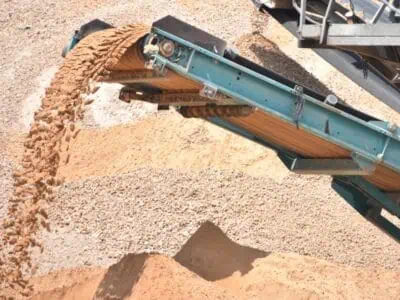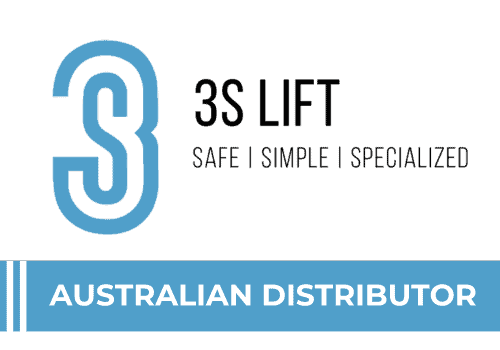Belt tension might not be top of mind until something goes wrong, but by then, it’s usually too late. When a conveyor belt loses its tension sweet spot, slippage, misalignment, and unexpected downtime follow fast. For construction, logistics, or warehousing, these delays don’t just cost time—they cost money.
Correct conveyor belt tension affects everything from material flow to energy use. It determines how well your belt grips the pulleys, how safely your system operates, and how often you’ll be wrenching under the hood for repairs. If you’re dealing with mobile conveyors, variable loads, or high-throughput systems, tension becomes even more critical.
This blog walks through the core problems poor tension causes, how to spot them early, and what to do about them, whether you own your system or rely on hiring.
What is conveyor belt tension, and why is it critical?
Conveyor belt tension is the force applied to keep the belt tight across the pulleys. Too much or too little, and things start to fall apart. The goal is balance—enough force to move loads consistently without putting stress on components. Correct belt tension:
- Prevents slippage, keeping material flow consistent.
- Maintains belt tracking, avoiding costly edge damage.
- Reduces wear on pulleys, rollers, and drives.
- Improves energy efficiency, lowering operational costs.
When tension is off, your system works harder than it should, which shortens lifespan and increases power usage. It’s like driving with flat tyres—possible, but rough, risky, and expensive.
What common issues result from incorrect belt tension?
Once belt tension drops below optimal, things start going pear-shaped. And when it creeps too high, the damage can be just as bad. Most operators first notice issues with tracking, noise, or unusual wear patterns. Typical problems from incorrect tension include:
- Misaligned belts that drift and rub against frame edges.
- Slippage, especially during start-up or inclined movement.
- Overloaded drive motors, leading to overheating or shutdown.
- Pulley and bearing failure from excess strain.
Left unchecked, these issues escalate quickly. Incorrect tension quietly reduces performance and drives up maintenance costs. Worse, it often goes unnoticed until the system stops completely. Suppose you’re still deciding between different conveyor types for warehouses, factor in how tension is maintained and adjusted. Some systems offer easier access to tension controls and tracking guides, which can save time and prevent mechanical issues later.
How does poor tension impact system productivity?
Poor tension steals productivity in subtle ways, then hits hard when it fails completely. Even light slippage slows material handling. Belt bounce causes load shifts. And minor misalignments create friction that drags the whole system down. You’ll likely face:
- Lower throughput, as belts can’t maintain a consistent speed or grip
- Unscheduled downtime, triggered by tracking failures or snapped belts
- Higher operating costs, from energy loss and repeated adjustments
- Reduced equipment life, especially on portable and high-load setups
These effects multiply when handling heavy or shifting materials. For example, understanding how rock conveyors operate helps explain why even minor tension issues can be catastrophic when moving dense loads. Tension failures become more likely, and the system becomes harder to stabilise.
What are the best ways to measure and adjust belt tension?
The key to long-term performance? Check and adjust tension regularly using practical tools and observation. Set-and-forget doesn’t work here—belt conditions change with load type, temperature, and movement. Effective techniques include:
- Tension gauges: Provide accurate measurements matched to specs
- Test runs: Reveal bounce, slippage, or off-track movement under load
- Visual inspections: Detect signs like edge fraying, pulley wear, or belt chatter
- Consistent adjustments: Use screw or gravity take-up units for balanced tensioning
| Adjustment Tool | Best For | Keep In Mind |
| Mechanical tension gauge | High-precision setups | Check both static and loaded |
| Manual adjustment bolts | Portable, smaller systems | Adjust both sides equally |
| Gravity take-up unit | Long belts, heavy loads | Still needs regular inspections |
| Run-time observations | Any system | Watch for belt flutter or noise |
Sticking to a simple inspection schedule reduces surprise failures and keeps systems stable, even in dusty or outdoor environments.
Can conveyor hire services help manage tension issues?
Absolutely. Hiring isn’t just about filling a gap—it’s a smart way to access expert setup, tensioned gear, and equipment that fits your exact needs. When tension’s critical and time is tight, hiring support removes the guesswork. Key advantages include:
- Professionally tensioned systems, pre-checked and ready to run
- Load-specific setups, matched to weight, incline, and speed requirements
- Ongoing support, including maintenance if tension starts to drift
- Swap-out options, reducing downtime when gear doesn’t suit the task

Hiring also gives you flexibility, especially helpful when you need portable conveyor hire for efficient project flow across changing terrain or materials. Systems arrive calibrated, so you’re not losing the first few hours of each job adjusting pulleys and bolts.
Is tensioning different for portable conveyor hire setups?
Yes—and it’s something many teams overlook. Portable systems, by nature, get bumped, reassembled, and exposed to inconsistent loads. That variability means tension checks need to happen more often. Key differences with portable systems:
- Re-tensioning after setup or transport is often required
- Manual tensioning methods are more common than automated ones
- Shifting loads (e.g. sand one day, rubble the next) change belt stress
- Environmental exposure, like rain or heat, affects belt elasticity
Keeping everything safe also means understanding plant and machinery safety regulations. Incorrect belt tension is a top cause of snapped belts, pulled pulleys, and shifting loads—all serious hazards on any site. Regular checks are a must, not a maybe.
Final thoughts on managing conveyor belt tension effectively
Tension is the heartbeat of your conveyor system. When it’s right, everything flows. When it’s wrong, performance falters, components break, and timelines stretch out.
Whether you’re managing bulk movement or fine-tuning an indoor system, tension deserves attention. Choosing conveyors with simple adjustment access, following a check schedule, and working with experienced suppliers makes the difference between steady progress and constant delays.
If you’re still weighing your options or need job-specific guidance, you can discuss your project with Conveying & Hoisting Solutions. Their practical insight into tensioning, hiring, and setup can make your next project smoother from the start.




